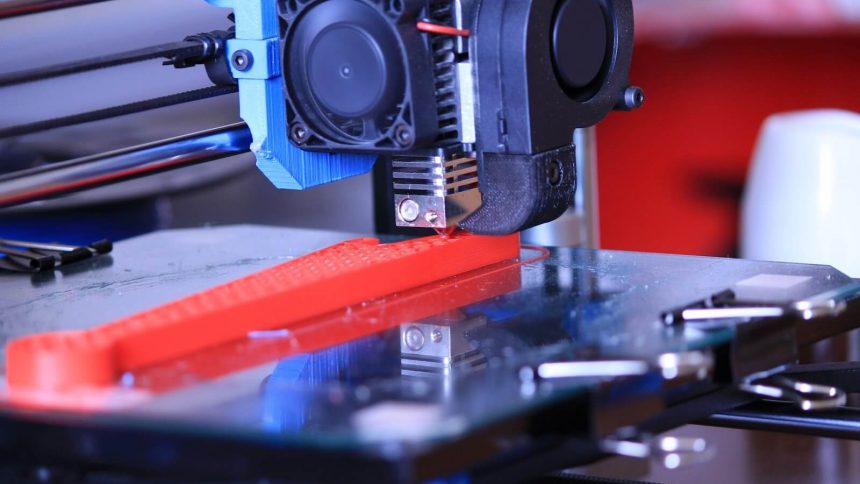ABS properties are numerous. The material has good impact resistance, as well as a good structural stiffness. Its resistance to high and low temperatures and its great electrical insulation properties can also be mentioned.
Acrylonitrile Butadiene Styrene (ABS) is used by 3D FDM or FFF printers and comes in the form of a long filament wound around a spool. Operating the 3D printer is fairly simple: the ABS strand is guided into an extrusion head or extruder that heats the ABS plastic to its melting point in order to liquefy it. Once liquefied, the material is deposited layer by layer on a printing platform (which may or may not be heated). By using such a simple manufacturing process, creating plastic products becomes quite easy.
This advantage of this kind of additive manufacturing technique is its affordability. Thanks to the lapse of certain patents related to FDM technology in 2009, the cost of 3D printing in ABS has significantly decreased. Entry-level printers cost between a few hundred to several thousand euros. Plastic materials are also affordable, like ABS filament, which is priced at less than €50 per kg. The use of this material could help you lower your production costs.
For this reason, ABS polymer and 3D FDM/FFF printers are a very popular combination for many applications.The physical properties of this type of plastic, like its impact resistance, tensile strength and stiffness, and its heat deflection temperature, are real advantages. It can also be used for mechanical purposes, or for its electrical properties.
In addition to its chemical resistance and mechanical properties, ABS material has a good surface quality and is flame retardant. The raw material color is white, but the oxidation of the polymers can lead to a yellowing color. Moreover, it is easy to glue and paint plastic products printed with ABS material, offering possibilities of customization.
ABS material has a low melting point, which makes it a material that is not really adapted to high heat situations. However, this low melting point makes ABS easy to machine with desktop 3D printers, or during an injection molding process.
But ABS also presents some disadvantages and can’t be used to manufacture all kinds of components. Poor weathering resistance as well as poor resistance to solvent and limited use for the food industry.



 Connect with Google
Connect with Google Connect with Facebook
Connect with Facebook